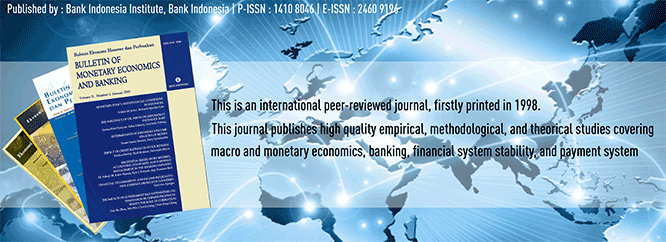
Document Type
Article
Abstract
This study measured the time inconsistency of monetary policy in Indonesia using the asymmetric preference parameter in linear exponential loss function of the central bank. Asymmetric central bank preference becomes an important issue since many of the results on the time inconsistency problem under symmetric preferences may no longer hold under asymmetric preferences. Using two sub-samples, i.e. before and after the implementation of central bank independence act, the conditional mean and the conditional variance of the output gap were estimated and then proceed to estimate the reduced form of the model. The results showed the existence of an asymmetric preference parameter before the Bank Indonesia independence act, which indicated the presence of a time inconsistency problem of monetary policy. This finding implies Bank Indonesia put a negative weight instead of positive weight on the output gap prior to its independency. However, after the implementation of central bank independence, the monetary policy of Bank Indonesia has been consistent with symmetric policy preference over price stability and output. Keywords: Time inconsistency, discretionary, monetary policy, asymmetric central bank preference, output gap, inflation bias.JEL Classification : E52, E58
Recommended Citation
Rahmahdian, Rini and Warjiyo, Perry
(2013)
"MENGUKUR TIME INCONSISTENCY KEBIJAKAN MONETER DI INDONESIA,"
Bulletin of Monetary Economics and Banking: Vol. 15:
No.
4, Article 9.
DOI: https://doi.org/10.21098/bemp.v15i4.71
Available at:
https://bulletin.bmeb-bi.org/bmeb/vol15/iss4/9
First Page
335
Last Page
366
Creative Commons License

This work is licensed under a Creative Commons Attribution-NonCommercial 4.0 International License
Country
Indonesia
Affiliation
Universitas Andalas







